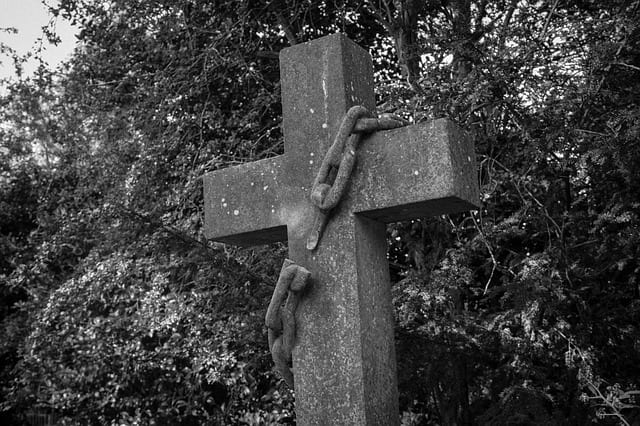
Today I am angry.
I am angry and tired of seeing my fellow white Christians behave so shamefully in response to the recent nationwide protests against the brutalization and murder of Black people in our country. I know that many of you are out there listening to and supporting your Black brothers and sisters, and I’m thankful to you. But I’m angry with so many public Christians, and my fellow Catholics in particular, who are giving a shameful, sinful, scandalous racist example.
It’s not just that you’re saying you disagree with their methods, which is a topic for another day. It’s the flippancy and the anger that people would speak out against racism in the first place. It’s as if you think that being anti-racist, listening to and supporting our brothers and sisters who aren’t white, following their leadership to try to bring justice to our country and our world, is somehow a silly distraction from the real work of being a Catholic.
Today I saw a rather famous Catholic apologist with a big following share a painting, a version of the Pieta with the Blessed Mother and Christ painted as modern-day Black people, the dead teenager in a black hoodie and the grieving mother with a modern haircut. That apologist was ridiculing and mocking the image, as if there was something inappropriate in seeing Christ in people who are the victims of injustice. And then a second famous Catholic apologist commented on that tweet. His response was even worse. He acted as if he didn’t even know that it was supposed to be a Pieta. And he made an extremely ugly racist crack: “Where is the father in this picture?”
He couldn’t recognize the painting as a Pieta, I assume because the two models for Mary and Jesus were in modern clothing and Black. And, not recognizing Christ, he didn’t ask what this was all about or say something sympathetic about the grieving mother and the dead Child he didn’t know. He responded by repeating a disgusting, false, racist, victim-blaming stereotype about absent fathers and broken families. And indeed, if you take a glance at his Twitter page, it’s not the only time he has blamed the victims of racist violence and repeated the claim about absent fathers.
This man is a professional Catholic apologist.
I don’t know how to get through to people who are determined not to listen. But I feel like I have to keep shouting this anyway, to my fellow white American Catholics, especially those who come from more affluent backgrounds and haven’t suffered a lot of violence: Christ doesn’t look like us.
Christ doesn’t look like us, on purpose.
Christ chose to look like all the people we’ve been raised to hate.
When Christ became incarnate, He could have chosen to be any kind of human He wanted. He could have chosen to be a Roman emperor, or a Samurai, or a movie star, or the Crown Prince of England, or the son of a billionaire with an apartheid emerald mine. He could have chosen to be a white guy from a nice residential neighborhood in Columbus, Ohio– Clintonville, maybe, or Upper Arlington, the son of Greg and Karen so-and-so who were never the victims of any violence. He didn’t choose any of those. He chose to become incarnate as Jesus of Nazareth, the Son, as was supposed, of Joseph and Joseph’s fiancee Miriam. Joseph was a manual laborer. Miriam, according to tradition, worked as a servant in the temple; she was the only child of her parents, in an era when having few children and no sons was considered a punishment from God and disgrace.
If we do not see Christ in families that our culture has conditioned us to call disgraceful, I think you and I have failed as a Christian.
Christ chose to become a zygote that then became an embryo and then a fetus and then a newborn infant, freezing in the cold of a desert night, curled up for warmth in the straw with the barnyard animals breathing on Him to keep Him warm. His mother and His foster father had nowhere to stay at the time, so they sheltered in the stable. His foster father was the father whose house He grew up in, the man He was obedient to. He had another Father, but that Father’s Kingdom was not of the world, so He grew up in another man’s home. And as for His mother, she got pregnant unexpectedly, out of wedlock, while a teenager. She was innocent of any sin but she looked as guilty as could be.
It’s wrong and harmful to claim that some race of people all come from “broken families” with “absent fathers” and teen mothers and you need to stop saying that. But if you and I cannot see Christ in babies born and unborn, particularly in families who are the victims of generational poverty and deliberate eugenic violence that sometimes makes it harder for them to live as you think a family should, families whose dads and foster fathers and stepdads work hard but can’t provide a nice comfortable place to stay because the world is unjust, in mothers who we decide are too young or look guilty of something– if we cannot see Christ in families we were raised to deem “broken,” I think we have failed as Christians.
And if we cannot see Christ in the children who are born to families that our society decides to dismiss and stereotype as “broken,” never seeing their struggle which isn’t their fault and only blaming them when things go wrong, I’m sure we have failed as Christians.
Christ chose to become a Child Who would be wanted by the law. The local ruler would want to murder Him as part of a genocide, so that He wouldn’t interfere with law and order and the governor’s plans. And so His parents took Him in the dead of night and they rushed a border, in violation of the law, and became refugees, and went into hiding in a foreign country where they didn’t speak the language and had to depend for a time on the mercy of others. He could have been some other child, but He chose to be incarnate as that kind of Child.
If you cannot see Christ in a person who the Law considers a nuisance and a danger because of their race or the family they come from, in a person on the run, in a person who had to become a refugee, a child in danger of genocide, a family that needs help, a family terrified of the police, then I think you have failed as a Christian.
If you and I cannot see Christ in people who rush a border and end up living somewhere else, dependent on the mercy of others, speaking another language, because they were displaced by a genocide, then I’m sure we have failed as Christians.
Christ chose to become a Human Who would grow up in an occupied land. He and His family spent His childhood in a poor, disreputable part of a despised corner of a vast empire– a neighborhood you might call “sketchy.” Can anything good come out of Nazareth? He wasn’t a member of the powerful race. He wasn’t white. He wasn’t European. He grew up, cared for His mother, lived and worked on land He didn’t own under the eye of people who would gladly have murdered Him if He made trouble. He was the descendant of slaves. He, Himself, was sold by someone He considered a friend, and put in chains, and tortured and dehumanized by His captors, and His mother had to watch helpless as so many mothers of slaves have had to watch their children dragged away.
If we cannot see Christ in enslaved people and the descendants of slaves, in people who were chained and tortured and treated as animals, people who were sold for profit– woe to us, we are damned, because we have failed as Christians.
Christ was lynched. He didn’t get a trial, not a real one. The whole city of Jerusalem dragged Him to what counted as a courthouse in those days, but Pilate didn’t find any guilt in Him. That didn’t mean Pilate would protect Christ, of course. Pilate didn’t care. Pilate had Christ tortured to see if it would help the situation. And when that wasn’t enough He handed Him over to the Roman soldiers. The soldiers did what they’d done so many times before: they abused Christ until His body nearly gave out, until He was so exhausted He couldn’t carry the cross on His own. They pressed into service Simon of Cyrene, not a white European either but a man who came from Africa, to help Christ drag His cross to the hill. And then they hung Him on a tree and mocked Him until He gave up the Ghost. His mother was utterly broken with grief. Pilate was shocked that He died so quickly but he wasn’t sorry. That type of Body was expendable, in order to keep the peace. They took the Body down and buried it hastily in a stranger’s grave.
If we cannot see an icon of Christ in a painting of a murdered child, we have failed.
If we cannot see the crucifixion of Christ in the deaths of George Floyd, Ahmaud Arbery, Breonna Taylor, Philando Castile, Tyre King, and every other person our racist culture has murdered, you and I have failed.
If we cannot seek Christ in the people our racist culture has conditioned us to hate, we can’t see Christ at all. And if we can’t see Christ calling to us to repent in the protests of the past week, I don’t think we will ever find Christ as our churches open back up and we go back to seeking Him in the chalice.
Racism is something that’s written into our culture, and we all need to examine ourselves and repent. Myself included. I need to repent, and I am trying to repent. May God have mercy on me where I fail. I am sorry.
If we don’t repent, the day will come when we’re looking straight at Christ and His most holy mother, but we won’t recognize them, and we will mock them as the Roman soldiers did, dismiss them with a stereotype, and we will be lost.
That day is upon us.
That day is now.
Image via Pixabay
Mary Pezzulo is the author of Meditations on the Way of the Cross.
Steel Magnificat operates almost entirely on tips. To tip the author, visit our donate page.











